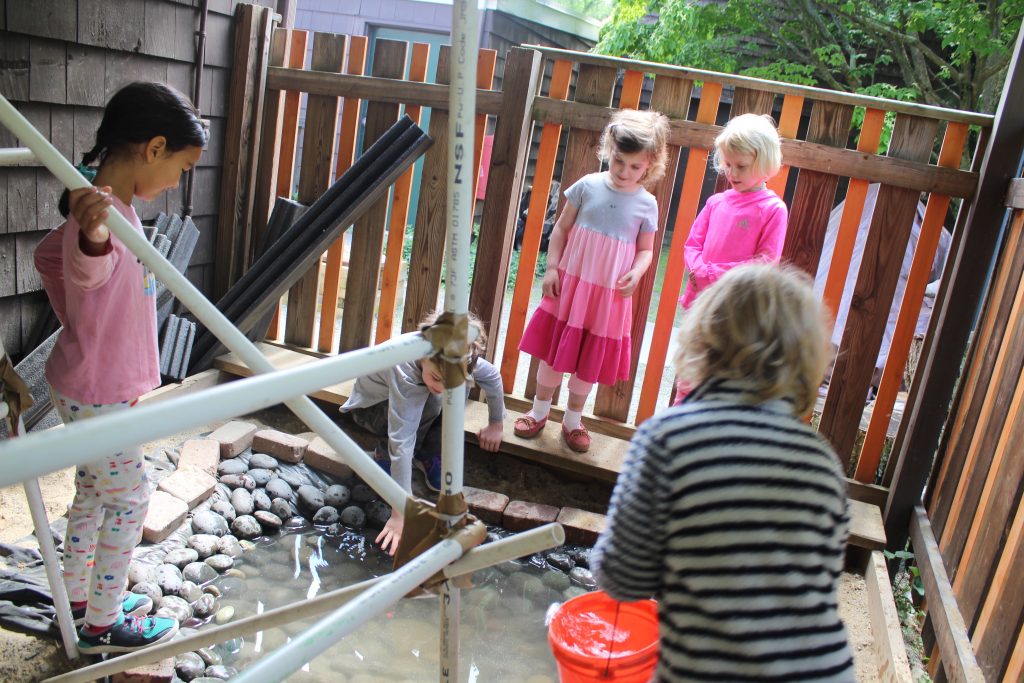Turns out constructing a pool IS hard work. It has been wonderful to see small groups of children working together towards this end, encountering problems, negotiating solutions with the larger group, and ultimately constructing something that satisfies.
SO THE POOL IS DEEP.
In conversation while at the snack table…
It needs to be deeper. I can still stand in that pool without the water. JANE
It should be wide too. MAREN
Cuz then we would break our heads open. RYAN
Doing the back stroke! JANE
When we push the sand in, it won’t be really deep. If we keep going in, and keep going in. Eventually it will be this deep. When we hit the gravel, I think we have to stop. BROOKE


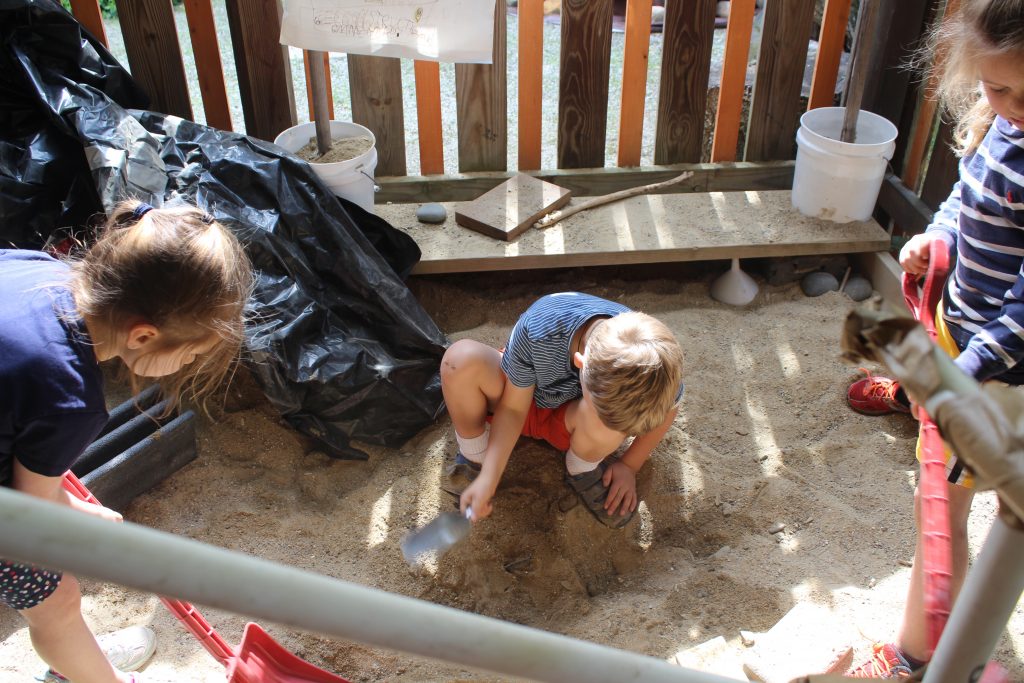
Unless we dig super strong with our muscles…at one time the pit will be as tall as me…Oh, that makes it fall back into the hole. GRAEME
C’mon! Let’s do it more, Vivian! JANE
SO THE WATER STAYS IN.
During a whole group conversation, children came together around a problem: We need to protect the water from the sand. Together, we brainstormed, ultimately creating a list of materials that could do this protective work.
– tile
– plastic
– “dynamite” rock
– cement
Teachers provided the plastic and a first small group of children began the process of measuring the space and the material to fit. They then worked to lay it down. After this work, the pool was still not complete. The next day they reflected on their process and the problems they encountered with the whole group.

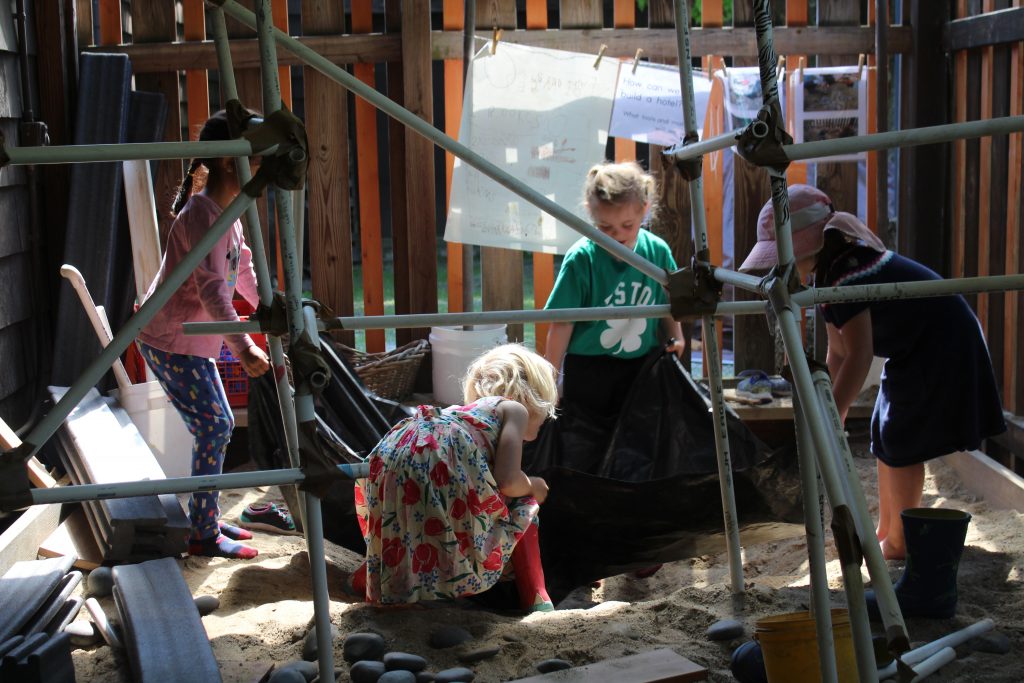
There was a hole in it. We used tape. The brown tape that was hard to cut. BROOKE
Someone stepped on the plastic and it popped holes. BEATRICE
So I know the problem, you only put rocks in the corners? GRAEME
And in the middle. ARYA
You can lift it up. If you fill the water in it then it can just go down those holes and pick the plastic up. GRAEME, describing how water seeping underneath could cause the plastic to rise.
If we didn’t patch the holes, the water wouldn’t stay in. It would just drain. ARYA

You know, Bea, how we put the rock in the middle of the thing? That would have made the holes. JANE
Why don’t we put a thin layer of plastic first and then put the real layer on top? LYLA
We tried taking off our shoes. BROOKE
We tried that and it didn’t work. BEATRICE
SO THE WATER DOESN'T MUDDY.
There was sand on the plastic and we were trying to get it off. BEATRICE
Cuz there's nothing to block it. To block the sand so it can't get in. ARYA


Karen worked with a small group to make sense of all the different materials they were testing out for the perimeter of the pool. There were many materials and many characteristics to rank!
The flat face is okay. The happy face, it’s great! The frown face, it’s terrible. Vivian
The top words mean the material, then those words mean the smiley face and the frowny face were for how it worked. Vivian
BRICKS. PIPE. FOAM. ROCK. We were using them for the pool structure. For keeping the sand out. Charlotte
The group explained the characteristics of the materials that were tested.
Weight: It had to weigh a lot to keep the sand out and hold the plastic. To keep the plastic in the pool. It had to be really heavy. Lyla
Height: The sand could blow, so the height could block it. Vivian
Color: If it was a black color it can get really hot. Cuz it can suck in the sun and make it hotter. The wood got a smiley face. Lyla
Breakability: Cuz they can break easily. Arya
Sucking in: Maybe sucking in water? Chester Cuz it doesn’t suck in water. Lyla
Looks: The looks of the foam was terrible! Lyla
The faces were counted in each column and there was a tie between the wood and the brick. "But, the brick won the whole one (no frowns) so we're using that." Lyla


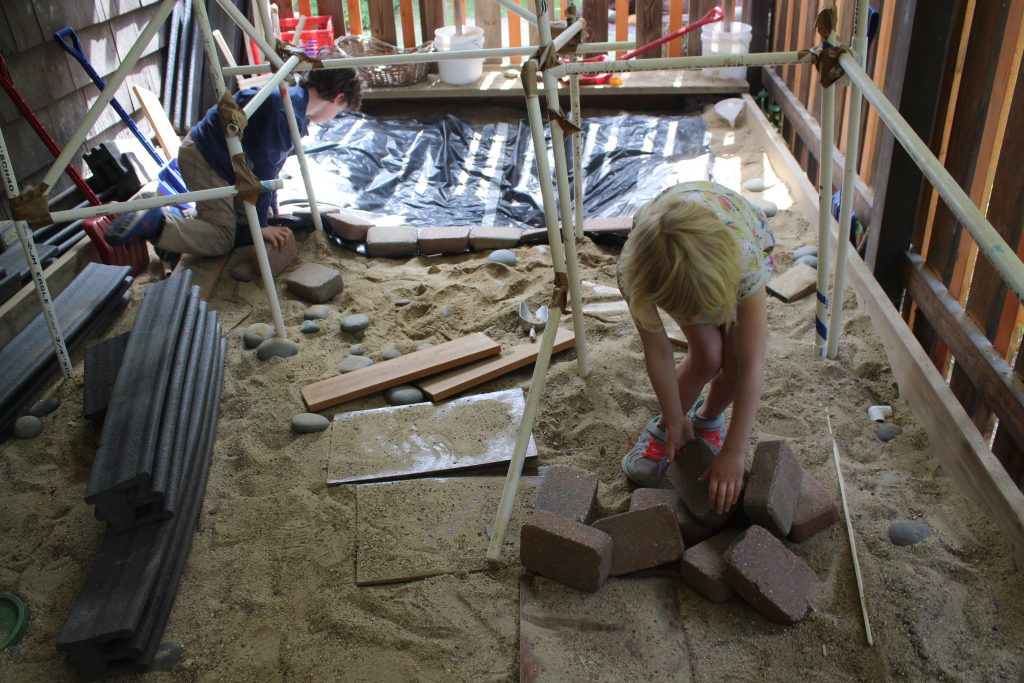
SO THE PLASTIC STAYS DOWN.
Are we gonna put them in the bottom so the plastic doesn't move around? RYAN
We could put this on the bottom in the middle. We need to cover the whole bottom. RYAN


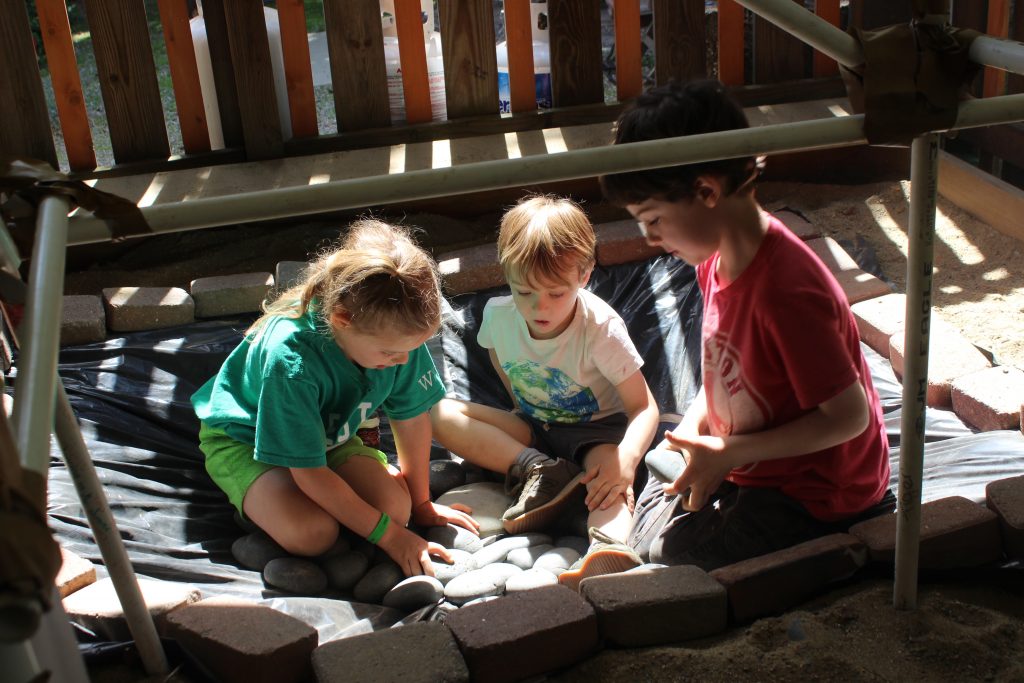
Are the rocks comfortable? RAY
Yeah, but they poke my tushy. BROOKE


SO WE CAN ENTER THE POOL.



There’s gonna be a wall right here so we can’t get in the pool. Ryan
Yeah, that’s what I’m saying. We could have a doorway here. Vivian
Why do you think that might be a good place? Emily
Because then we could go around. Vivian
We could just build a wall and not go together. We could just leave a space here. Ryan
I don’t think everybody would be able to duck down. We could take some of the pipes apart. Vivian

That looks great, Ryan! Vivian

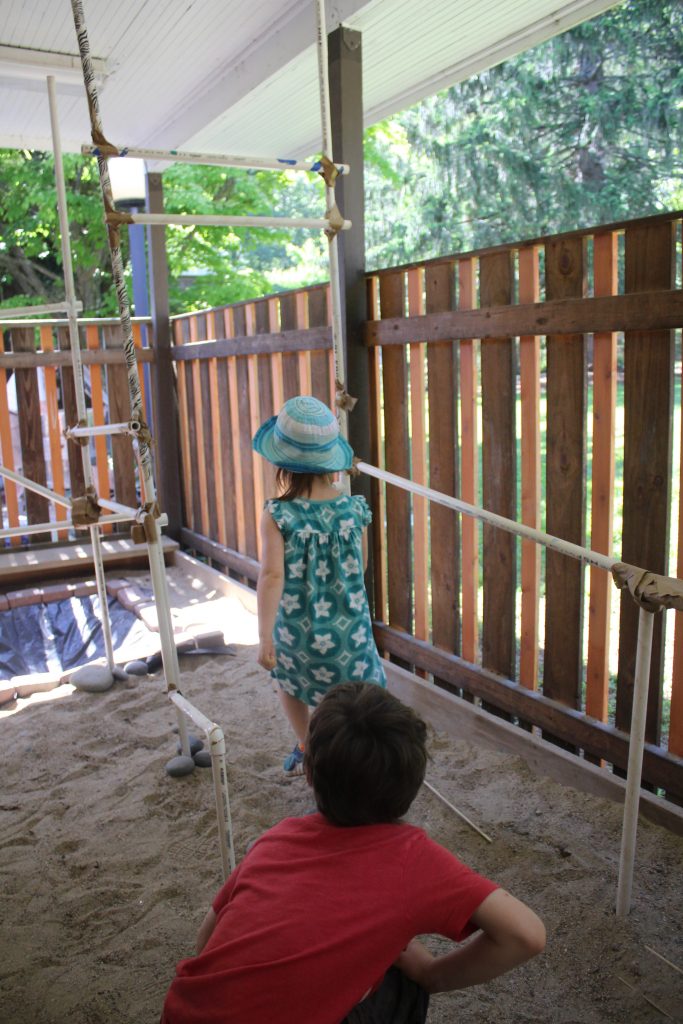
Vivian and Ryan test out the doorway.
I think we’re solving the problem!
We already solved the problem!
Vivian
How are we going to get water into the pool? Ryan


